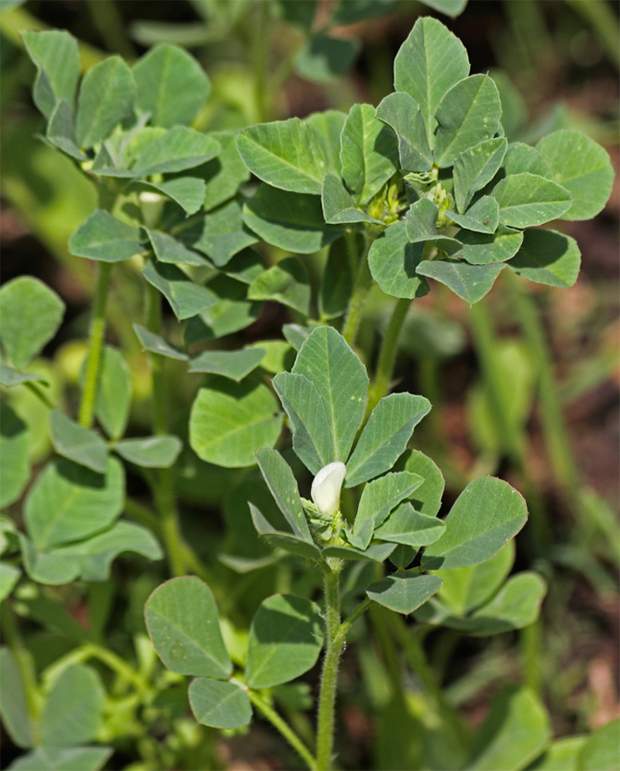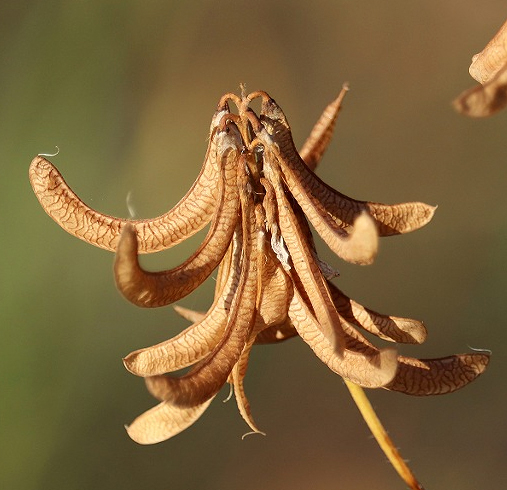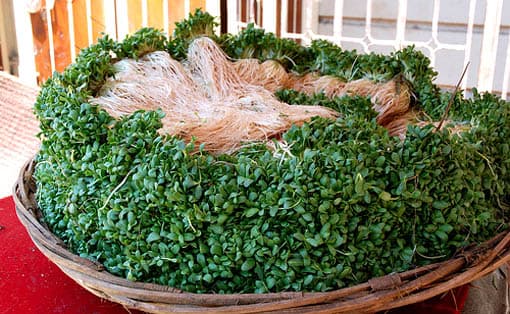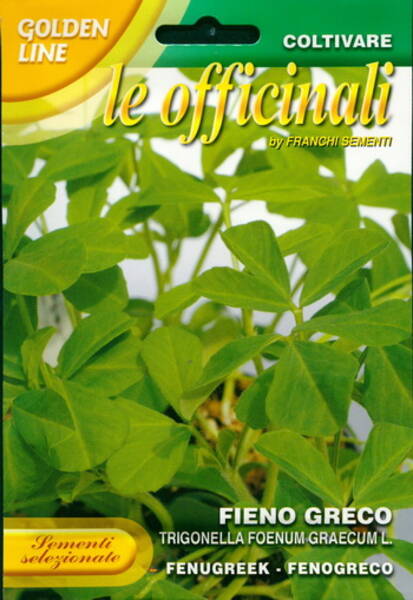It is not demanding, but still grows best in fertilized and well-lit areas. As a spice, trigonella is especially appreciated by the peoples of Transcaucasia.
It gives a unique taste and mushroom aroma to cereals, mashed potatoes and vegetables, various soups and borschts.
By the way, the famous hops-suneli and curry seasonings also contain this herb.
Fenugreek is propagated by seeds. Sow immediately in open ground, around the second half of April. Rows are made, the embedment depth is 1.5-2 cm, the row spacing is 20-30 cm.
Seedlings appear already on the 7-10th day. In the phase of 2-3 true leaves, the crops are thinned out, leaving 5-6 cm between plants. Trigonella does not require special care.
Like other legumes, it enriches the soil with nitrogen and is a good predecessor for all crops. Diseases and pests do not affect mushroom grass.
By the end of June, bushes 40-60 cm high grow. Narrow pods with seeds form on them. At the end of August, they ripen - the fruits turn yellow, and the seeds turn yellow-brown.
Pets willingly eat trigonella stalks. In dairy cows, this increases the fat content of milk. In addition, fenugreek is an excellent honey plant.
To obtain seasoning, the tops of plants with seeds are cut off at the stage of milky-wax ripeness. They are dried, threshed, seeds are separated from weeds, dried again and stored in paper or linen bags at room temperature. Mushroom grass reproduces by self-sowing. A pinch of crushed seeds will give any dish a unique taste and aroma (especially if this seasoning is grown with your own hands).
For the sake of this, it is worth finding a place for this wonderful plant on your garden.
Reproduction and agricultural technology.
Fenugreek prefers calcareous soils. The plant is photophilous. Propagated by seeds.
Sow in March - April in a wide row. Row spacing 45 cm. Plant care consists in keeping the soil loose and free of weeds.
Harvest.
Harvesting begins when 2/3 of the pods are ripe. Plants are cut and left in windrows to mature, then threshed and dried.
Application.
Fenugreek seeds contain up to 30% mucus, which is used in the pharmaceutical and textile industries.
The composition of spice mixtures or seasonings includes ground ripe fruits. For example, fenugreek is the main component of the "curry" mixture.
It is part of a mixture of turmeric, a mixture for maple syrup, "hops-suneli", adjika. In the US, fenugreek is flavored with rum and maple drink, sometimes added to the dough.
In India, surrogate coffee is made from roasted seeds. A salad is prepared from young plants.



Sicklefruit fenugreek, bird's foot, Greek hay-seed, Greek-clover.
* From ancient times until the end of the 19th century, fenugreek played an important role in herbal medicine. Then they forgot about it for a while, and today interest in it is growing again, thanks to its many valuable properties. For horses, the seeds of fenugreek hay were used by the ancient Greeks, who used it to restore the strength of the animal after an illness and to gain body weight (hence another name for fenugreek hay - Greek hay).
Fenugreek seeds have anti-inflammatory, antiseptic, anabolic and sedative effects, have a mild laxative effect.
Today, fenugreek seeds are used as:
- appetite stimulant, tonic and tonic, thanks to the protein (25%), fat (8%), bitter substances, vitamins (A, C, E, PP, etc.), macro- and microelements contained in them;
- enveloping - with cough and diseases of the gastrointestinal tract, due to the property of seeds in water to form a mucous mass (mucous substances 25 - 45%);
- stimulating lactation and uterine contraction, thanks to steroidal saponins and estrogen-like substances.












